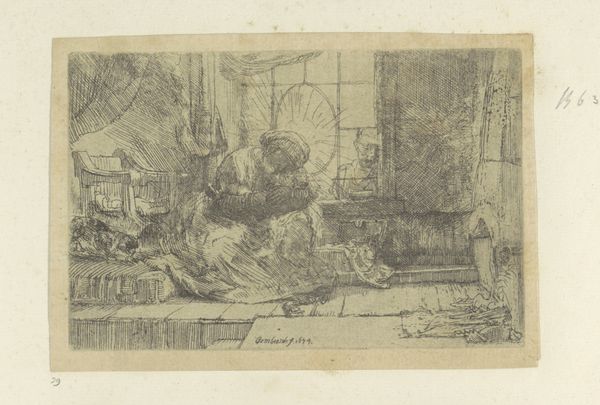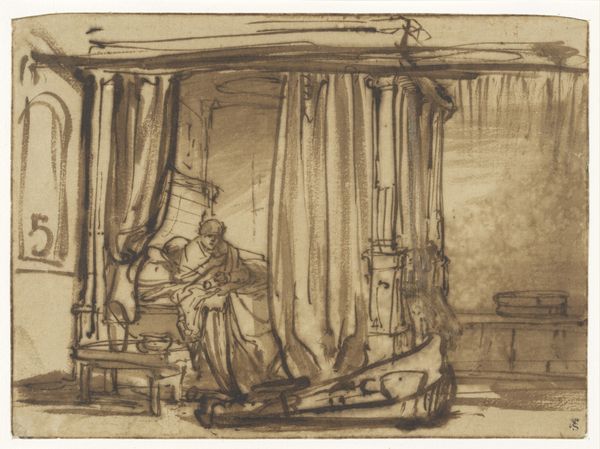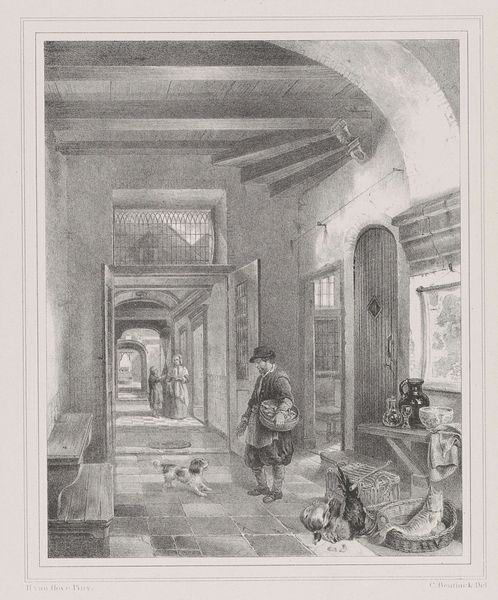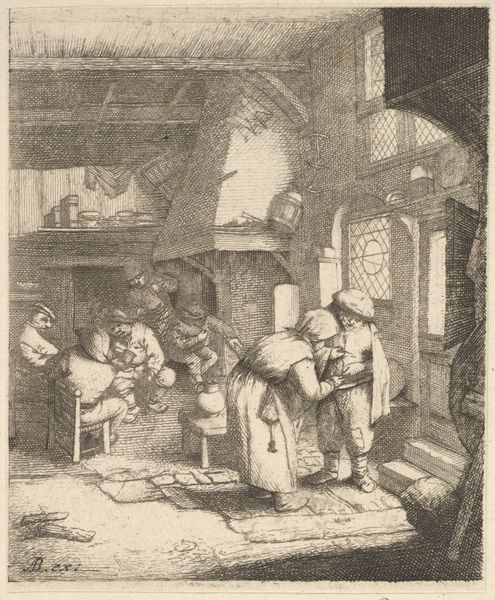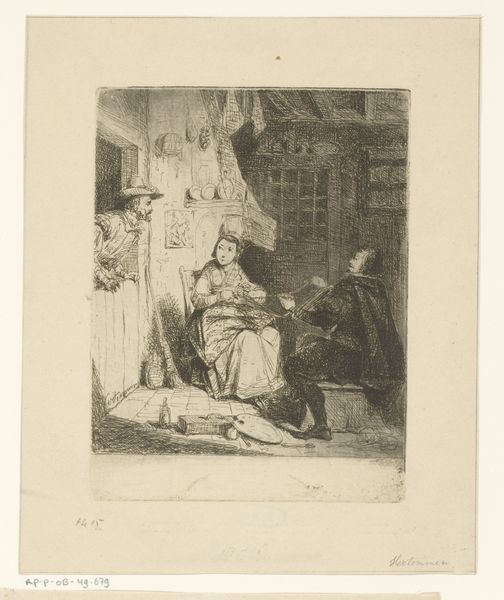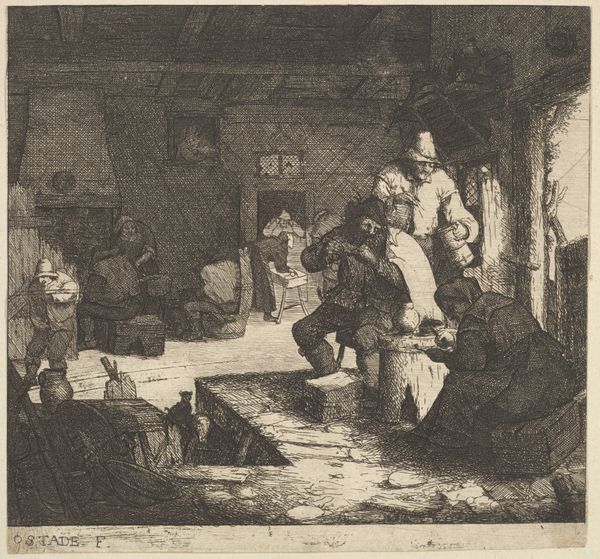
drawing, pencil
#
drawing
#
pen sketch
#
pencil sketch
#
sketch book
#
holy-places
#
romanticism
#
pen-ink sketch
#
pencil
#
orientalism
#
genre-painting
#
realism
Copyright: Public domain
Editor: So, this is "Interior of the Residence of the Pasha, New Orsova," a drawing by John Frederick Lewis, created in 1838 using pencil and pen. The level of detail is astounding, especially the intricate architectural elements, yet there's also a starkness to it, almost like a stage set. What catches your eye most in this piece? Curator: Well, this drawing exemplifies the Orientalist movement's fascination with depicting the "exotic" East. It's crucial to understand that this isn’t necessarily a neutral observation. The Pasha’s interior, meticulously rendered, becomes a spectacle for the Western gaze. Consider how this image might have been received and consumed by a British audience hungry for images of a world deemed both alluring and inherently "other." What do you notice about the composition, particularly regarding the gaze and the power dynamics? Editor: I see what you mean. He’s posed, almost like a specimen. It feels like we're meant to observe him, not connect with him. The gun by the door adds a subtle sense of… unease? Like a claim of territory? Curator: Precisely. The gun can be interpreted as a signifier of power and control, reinforcing a Western perception of the East as both alluring and potentially dangerous. But consider this: where would this image have circulated? How did museums or galleries then play a role in shaping these perceptions of the "Orient?" Editor: Probably in exhibitions catering to specific audiences, reinforcing existing power structures and imperial ambitions, maybe? It's like the artwork becomes a tool to validate a certain worldview. Curator: Exactly. This piece, though aesthetically impressive, raises crucial questions about representation, cultural appropriation, and the socio-political function of art in shaping historical narratives. Editor: I never considered how something as seemingly straightforward as an interior scene could be so deeply entangled with political implications. It completely reframes how I view similar artworks. Curator: Indeed. Looking at art through the lens of social and cultural history offers a more nuanced understanding, revealing the complex relationship between aesthetics and ideology. There’s always more than meets the eye, isn’t there?
Comments
No comments
Be the first to comment and join the conversation on the ultimate creative platform.


